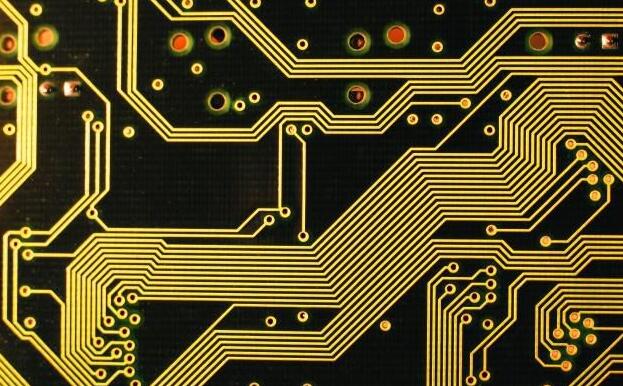どうやって PCB 制御インピーダンス?
連続的に増加する PCB 信号切替速度, 今日の PCB 計画メーカーは理解し、インピーダンスを制御する必要があります PCB 跡. 最新ディジタル回路の短い信号伝送時間と高クロックレートに対応する, PCB 痕跡はもはや単純な接続ではない, 伝送線路.
実際に, デジタルエッジ速度が1 nsより高いか、またはアナログ周波数が300 MHzを超えると、トレースインピーダンスを操作する必要がある. Aのキーパラメータの1つ PCB trace is its characteristic impedance (それで, the ratio of voltage to current when the wave is transmitted along the signal transmission line). プリント基板上の導体の特性インピーダンスは回路基板計画の重要な指標である, 特に PCB 高周波回路計画, 導体の特性インピーダンスと機器または信号によって必要とされる特性インピーダンスが共通であるかどうかを考慮する必要がある . インピーダンス操作とインピーダンス整合. 本稿では、インピーダンス操作とスタック計画の課題について述べる.

Impedance control
Impedance control (eImpedance Controling), 回路基板の導体は様々な信号を送信する. 伝送速度を上げるために, 周波数を上げる必要がある. インピーダンスの変化は信号の歪みになる. したがって, 高速回路基板上の導体のインピーダンス値はある範囲内で制御されるべきである, インピーダンス制御という.
のインピーダンス PCB トレースは、その誘導および容量インダクタンスによって確認される, 抵抗と伝導度. インピーダンスに影響する主因子 PCB トレース:銅線の幅, 銅線の厚さ, 媒体の誘電率, 培地の厚さ, パッドの厚さ, 接地線の経路, そして、ワイヤーの配線. 範囲 PCB インピーダンスは25〜120オーム.
実際に, the PCB 伝送線路は一般にワイヤトレースで構成される, つ以上の基準層及び絶縁材料. トレース及び基板層は制御インピーダンスを構成する. The PCB 多層構造を選ぶ, また、制御インピーダンスも様々な方法で構築することができる. しかし, どんな方法を使っても, the impedance value will be determined by its physical structure and the electrical characteristics of the insulating material:
The width and thickness of the signal trace
The height of the core or pre-filled material on both sides of the trace
Trace and layer configuration
Insulation constant of core and pre-filled material
There are two main forms of PCB 伝送線路:マイクロストリップとストリップライン.
Microstrip:
A microstrip line is a ribbon wire, 片側に基準面がある伝送線路を指す. The top and sides are exposed to the air (coating layer can also be applied), 絶縁定数Er回路基板の表面に位置する. 参照用電源またはグランドプレーン. As shown below:
Note: In practical PCB製造, ボード工場は、通常、表面のコート PCB 緑色の層で. したがって, 実用インピーダンス計算, the model shown in the figure below is generally used for the calculation of the surface microstrip line:
Stripline:
Strip line is a strip wire placed between two reference planes. 下記の図に示すように, H 1とH 2によって表される誘電体の誘電率は異なる.
上記2つの例はマイクロストリップラインとストリップラインの典型的な実証である. 特定のマイクロストリップラインとストリップラインの多くのタイプがあります, 被覆マイクロストリップ線路など, どちらが特定の PCB 積層構造.
特性インピーダンスを計算するために使用される方程式は、乱雑な数学計算を必要とする. 一般に, フィールドソリューションメソッドを使用します, ギャップ要素の解析を含む. したがって, 特殊インピーダンス計算ソフトウェアSI 9000の使用, what we need to do is to control the parameters of the characteristic impedance:
The dielectric constant Er of the insulating layer, 配線幅W 1, W2 (trapezoid), 配線厚Tと絶縁層厚H.
Explanation on W1 and W2:
The calculated value must be within the red box. 他の条件は類推によって推論できる.
The following uses SI9000 to calculate whether the impedance control requirements are met:
First, calculate the single-ended impedance control of the DDR data line:
TOP layer: the copper thickness is 0.5オンス, トレース幅は5 milです, 基準面からの距離は3である.8ミル, 誘電率は4である.2. モデルを選択, パラメータを置換する, とロスレス計算を選択, as shown in the figure:
Coating indicates the coating layer. コーティング層がない場合, fill 0 in thickness and 1 (air) in dielectric (dielectric constant).
基板は基板層1を示す, それで, 誘電体層, 一般的にFR - 4を選ぶ, 厚みはインピーダンス計算ソフトウェアで計算される, 誘電率は4である.2 (when the frequency is less than 1GHz).
Click on the Weight(oz) item, あなたは銅舗装の銅の厚さを設定することができます, そして、銅の厚さは、トレースの厚さを決定する.
9. プリプレグの概念/Core of the insulating layer:
PP (prepreg) is a kind of dielectric material, ガラス繊維とエポキシ樹脂から成る. コアは実際にPPタイプの媒体です, しかし、それは両面に銅箔で覆われている, PPがそうしない間. 多層基板製造, 通常コアとPPは協力で使用されます, コアとコアはPP.
10. 注意を要する事柄 PCB stack-up planning:
(1), warpage problem
The PCB積層板 plan should be symmetrical, that is, 各層の誘電体厚さと銅の厚さは対称である. 層を取る, トップGNDとボトムパワーの誘電体厚さと銅厚さは同じである, L 3パワーの誘電率と銅厚さと同じGND - L 2. このように, 積層中に反りは発生しない.
(2) The signal layer should be tightly coupled with the nearby reference plane (that is, the dielectric thickness between the signal layer and the nearby copper layer should be small); the power copper and ground copper should be tightly coupled.
(3) Under very high-speed conditions, 信号層を遮断するために、冗長接地層に加わることが可能である, しかし、複数のパワー層をブロックしないことを推奨します, 不要なノイズ妨害を引き起こす可能性があります.
(